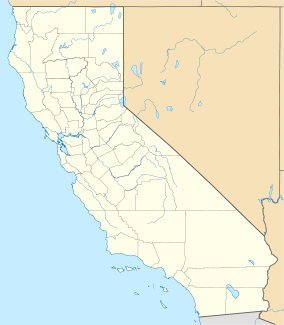Trilobite Wilderness is a wilderness area in the Marble Mountains of the eastern Mojave Desert in northeastern San Bernardino County, California. It is named for the large number of trilobite fossils that can be found within its boundaries. Aside from its paleontological significance, it is home to typical flora and fauna of the Mojave Desert, including a stable population of bighorn sheep and desert tortoise.[1][2] The area was created as an addition to the National Wilderness Preservation System in 1994 as a part of the California Desert Protection Act.[3]
| Trilobite Wilderness | |
|---|---|
 Sign welcoming visitors to the area | |
| Location | Mojave Trails National Monument, San Bernardino County, California |
| Nearest city | Chambless, California |
| Coordinates | 34°38′24″N 115°33′0″W / 34.64000°N 115.55000°W |
| Area | 37,308 acres (150.98 km2) |
| Established | 31 October 1994 |
| Governing body | Bureau of Land Management |
The site is managed by the Bureau of Land Management. It is one of six wilderness areas in Mojave Trails National Monument, established in 2016.
Geology
editIn the early Cambrian, fossiliferous sediments from a shallow sea were deposited upon a basement of Proterozoic granite and later uplifted to form the Marble Mountains. These sediments – the Latham Shale Formation – are between 50 ft (15 m) and 75 ft (23 m) thick. Deeper sediments were metamorphosed into quartzite and form a thin layer ~10 ft (3.0 m) thick between the shale and basement granite.[4][5]
Fossils
editThe abundance of trilobite fossils, some measuring as long as 8 in (20 cm), give the wilderness area its name – in places virtually every piece of extracted rock contains pieces of fossil trilobite.[6] Trilobites from the order Olenellina are predominant, but 12 species of trilobite have been discovered in this area. Full specimens are rare, with trilobite heads being the most commonly found feature, potentially indicating the area was the site of a trilobite molting ground.[7][5][4] In all, roughly 21 species of Cambrian invertebrates have been discovered in the area, including articulate brachiopods and Anomalocaris appendages. Oncolite fossils are also found in significant quantities.[7][8] This makes the area a bucket-list location for trilobite collectors worldwide.[6]
References
edit- ^ "Trilobite Wilderness". wilderness.net. Archived from the original on 19 July 2024. Retrieved 28 October 2024.
- ^ "Trilobite Wilderness | Bureau of Land Management". www.blm.gov. Archived from the original on 22 April 2024. Retrieved 28 October 2024.
- ^ "Public Law 103-433". uscode.house.gov. Archived from the original on 27 September 2024. Retrieved 28 October 2024.
- ^ a b Norris, Robert M.; Webb, Robert W. (1990). Geology of California (2nd ed.). John Wiley & Sons. p. 244. ISBN 0-471-50980-9.
- ^ a b Sylvester, Arthur Gibss; O'Black Gans, Elizabeth (June 2021). Roadside Geology of Southern California. Mountain Press. p. 68. ISBN 978-0-87842-653-9.
- ^ a b "Latham Shale – California Dreamin'". American Museum of Natural History. Archived from the original on 14 April 2024.
- ^ a b Waggoner, Ben (8 July 2000). "The Marble Mountains". University of California Berkeley. Archived from the original on 27 February 2024. Retrieved 28 October 2024.
- ^ "Trilobites In The Marble Mountains, Mojave Desert, California". inyo.coffeecup.com. Retrieved 28 October 2024.

